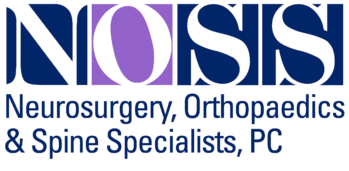Understanding Age-Related Pain and Treatment Options
As we age, our bodies go through a number of changes that can make us more susceptible to pain. In fact, according to the National Institutes of Health, approximately 50% of older adults experience chronic pain. This can have a significant impact on their quality of life, making it more difficult to perform everyday tasks and enjoy activities they once loved. In this article, we will explore the different types of pain that older adults may experience and the treatment options available to manage pain and improve quality of life.

Understanding Age-Related Pain
As we age, our bodies undergo a number of changes that can increase the likelihood of experiencing pain. One common cause of pain in older adults is osteoarthritis, which is a degenerative joint disease that causes the cartilage in our joints to break down over time. This can result in pain and stiffness in the affected joints, particularly in the knees, hips, and hands.
Another common cause of pain in older adults is spinal stenosis, which occurs when the spinal canal narrows and puts pressure on the nerves that run through it. This can cause pain, numbness, and weakness in the legs, back, and buttocks.
Other age-related conditions that can cause pain include fibromyalgia, which is a chronic pain condition that affects the muscles and soft tissues, and neuropathy, which is a condition that affects the nerves and can cause tingling, numbness, and pain.
Treatment Options for Pain in Older Adults
There are a number of treatment options available to manage pain in older adults. The best treatment approach will depend on the type and severity of the pain, as well as any underlying health conditions the individual may have.
Medications are often used to manage pain in older adults. Common pain medications include acetaminophen, nonsteroidal anti-inflammatory drugs (NSAIDs), and opioids. However, it’s important to note that older adults may be more sensitive to the side effects of these medications, particularly opioids, which can cause dizziness, confusion, and respiratory depression.
Nonpharmacological treatments can also be effective for managing pain in older adults. Physical therapy can help improve strength and flexibility, which can reduce pain and improve function. Occupational therapy can help individuals learn new ways to perform everyday tasks that may be causing pain. Acupuncture, chiropractic care, and local injections may also be beneficial for managing pain in some individuals.
In addition to these treatments, there are a number of lifestyle changes that can help manage pain in older adults. Exercise is one of the most effective ways to reduce pain and improve function. Even gentle exercise, such as walking or swimming, can help improve strength and flexibility and reduce pain. A healthy diet that includes plenty of fruits, vegetables, and whole grains can also help reduce inflammation and improve overall health.
Challenges of Pain Management in Older Adults
Managing pain in older adults can be challenging for a number of reasons. One challenge is that older adults may have multiple health conditions, which can make it difficult to determine the best treatment approach. For example, an older adult with osteoarthritis may also have high blood pressure, which could limit the use of certain pain medications.
Another challenge is that older adults may be more sensitive to the side effects of pain medications, particularly opioids. This means that lower doses may be needed to manage pain, which can make it more difficult to achieve effective pain relief.
Finally, older adults may be more reluctant to seek treatment for pain. This may be due to a number of factors, including a fear of side effects from medications or a belief that pain is simply a normal part of aging. However, it’s especially important for older adults to seek treatment. If you are suffering from chronic pain and looking for pain management specialists who truly care about your needs, request an appointment with us today.

